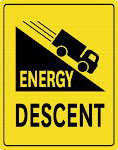I've been employing two helpful, completely free strategies this winter – digging more swales and eating more weeds and wild plants.

Foraging for over 50% of our greens this winter is joyous and has become a daily ritual; walking Zephyr to school; teaching him about edible weeds and bush tucker; 'nibbling' to experiment and learn together. I estimate that between 60-70% of the autonomous flora, or what others call 'spontaneous flora', is edible in these parts. Probably a fairly universal percentage.
Similarly, harvesting winter rains passively, without having to pay for expensive synthetic storage systems (tanks, pipes, valves, etc) is a wonderful and easy thing to set up. There's a little toil in the digging of the swales on contour, but this work is deeply rewarding, especially when the swales fill up with beautiful rain, which then slowly and deeply absorbs into the soil, ready for summer's use and the bounty that follows that we haven't had to irrigate.
All the very best things in life are uncapitalised.










